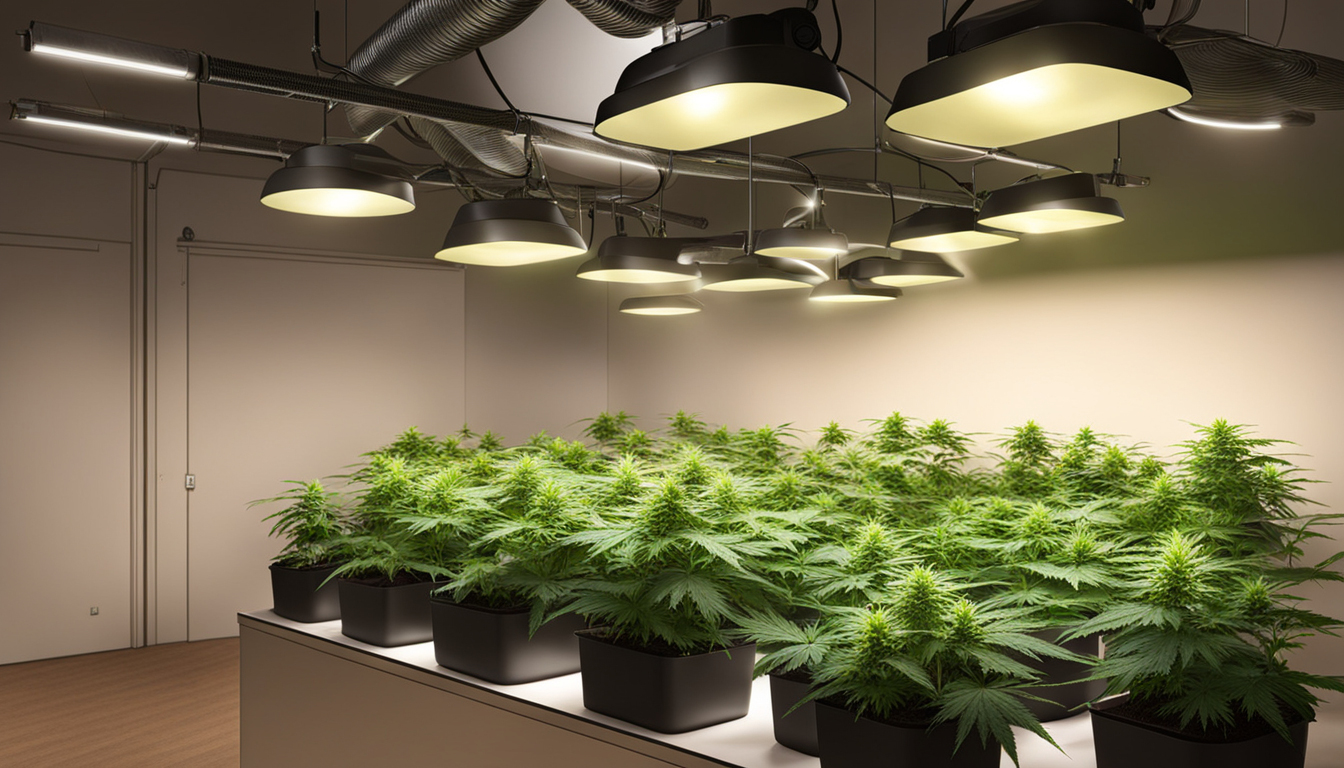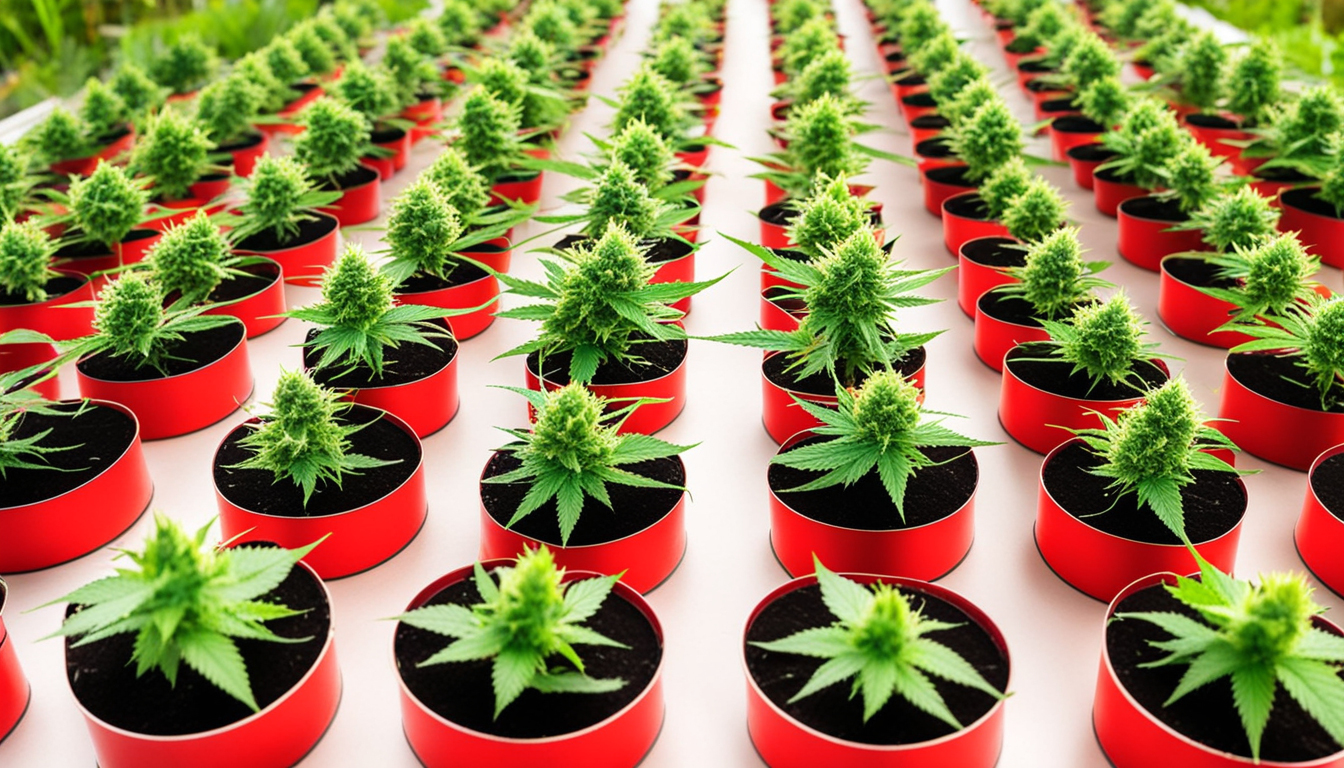Weed Growing Instructions

Whether you're new to weed cultivation or looking to improve your existing grow, following this complete guide will help you produce bountiful, high-quality yields right at home. With the right supplies, strategies, and attention, growing cannabis indoors can be an extremely rewarding and cost-effective endeavor.
Choosing Pot Varieties
The first step in planning your indoor crop is picking the right cannabis cultivars to produce. The three main types of weed plants each have their own characteristics.
Sativas
Known for their uplifting intellectual effects, sativas spread tall and slender with narrow leaves. They flourish in warmer equatorial climates and have a longer blooming time between 10-12 weeks indoors. Top sativa varieties include Jack Herer, Durban Poison, Super Lemon Haze, and Jack Herer.
Indicas
Indicas provide calming full-body effects and grow short and bushy with wide leaves. Accustomed to cooler mountain climates, they bloom faster within 2-2.25 months. Popular indica varieties include Granddaddy Purple, Northern Lights, and Bubba Kush.
Hybrids
Mixed strains blend traits from both energizing strains and relaxing strains. They offer combined effects and have medium blooming periods around 9-10 weeks. Popular hybrids are OG Kush, Girl Scout Cookies, and Blue Dream.

Setting Up Your Cultivation Space
Cannabis plants need the right controlled environment to thrive. Key factors for indoor grows are lights, ventilation, layout, and finding the ideal discreet area.
Location
Choose an empty space with direct access to water and power outlets. An empty spare room, large closet, corner of the basement, or grow tent securely placed in a garage all make great stealthy cultivation room spots.
Lighting
Marijuana requires intense light for all growth stages. LEDs are energy-efficient and come in broad spectrum options mimicking natural outdoor light. Cover 250-400 watts per square foot for the growth stage and 400-600 watts per square foot for bloom.
Airflow
Proper airflow and exhaust systems keep ideal temp, humidity, and pure CO2 levels. Set up quiet 10-15 cm blowers or carbon filters to circulate old air and eliminate odors.
Layout
Optimize your space by arranging plants strategically under the lamps and leaving room to reach and work around them. Set up distinct zones for vegetation, flowering, curing, and cloning.

Cultivation Substrates
Cannabis can be grown in different mediums, each with benefits and cons. Pick a proper option for your particular setup and cultivation style.
Soil
The traditional substrate, soil is affordable and easy for beginners. It provides excellent taste but needs more watering and fertilizing to feed plants. Enrich soil with vermiculite or coir to enhance aeration.
Coco Coir
Made from coconut husks, reusable coco coir retains water but still lets in air to the roots. It's more sterile and more consistent than soil. Use coco-specific nutrients to avoid calcium buildup.
Hydroponics
In hydro systems, plant roots develop right in fertilizer irrigation solution. This allows rapid growth but needs close monitoring of water chemistry. Deep water culture and drip systems are common techniques.
Germinating Seeds
Sprouting prepares your pot seeds to start growing radicles. This readies them for transplanting into their cultivation medium.
Towel Method
Put seeds between wet paper towel and maintain them damp. Check after 2-7 days for emerging radicles showing sprouting is complete.
Planting directly
Insert seeds right into wetted growing medium 1⁄4 inch deep. Gently water and wait 1-2 weeks until sprouts push through the surface.
Rockwool Cubes
Presoak cubic rockwool starters in pH-adjusted water. Place seeds 6mm deep into the cubes. Keep cubes wet until seedlings emerge within 1-14 days.
Transplanting Seedlings
Once sprouted, weed seedlings need to be transplanted to prevent crowding. Move them into proper sized pots.
Preparing Containers
Fill final containers with cultivation medium enriched with slow-release nutrients. Allow pots to soak up water for 8-12 hours before repotting.
Gently repotting
Gently separate seedling roots from germination medium using a spoon. Place into pre-soaked container at same depth as before and gently water in.
Growth Stage
The vegetative stage promotes leafy growth and plant form through 3/4 to full day of continual light exposure. This stage usually lasts 1-2 months.
Using 18-24 Hours of Light
Use lamps on a 24 daily schedule or natural sunlight to trigger nonstop growth. Lamp intensity influences size and node distance.
Nutrients
Use vegetative stage fertilizers higher in nitrogen. Make sure pH remains around 5.8-6.3 for proper nutrient uptake. Fertilize 1⁄4 to 1⁄2 strength after 14 days and strengthen gradually.
LST and topping
Fimming, low stress training, and trellising direct growth patterns for flat canopies. This increases yields.

Bloom Stage
The flowering stage grows buds as plants show their sex under a 12 hour cycle schedule. It lasts 2-3 months depending on variety.
Changing Light Schedule
Change grow lights to 12/12 or move outside for natural 12/12 timing. This triggers plants to start blooming.
Stop Fertilizing
Leaching removes fertilizer residuals to improve flavor. Fertilize weakly the first period then just use plain water the last 2 weeks.
Flushing
Continue 12 hour photoperiod but flush using pH-balanced water only. Return to plain watering if buds aren't mature after two weeks.
Reaping
Knowing when pot is fully ripe delivers peak cannabinoid content and aroma. Cut down plants at peak maturity.
Signs of readiness
Look for fading pistils, swelling calyxes, and 10-15% cloudy trichs. Inspect buds across the plant as they won't all ripen evenly.
Harvesting plants
Use clean, sharp pruning shears to gently cut each plant at the base. Leave 5-10cm of stem attached.
Curing
Hang intact plants or branches inverted in a lightless room with moderate temperature and RH around 45-65% for 7-14 days.
Curing
Aging continues drying while improving the buds like fine wine. This process mellows bitterness and further develops cannabinoid contents.
Curing containers
Trim dried buds from branches and store into glass jars, filling about 75% capacity. Use a sensor to measure jar moisture.
Opening jars daily
Open jars for a short time each day to slowly reduce humidity. Remoisten buds if humidity goes under 55%.
Long term storage
After 2-3 weeks when humidity stabilizes around 55-60%, do a final trim and store forever in airtight jars.
Troubleshooting
Even experienced growers run into various marijuana plant problems. Detect problems early and address them properly to keep a Donate Here vibrant garden.
Poor feeding
Yellowing leaves often indicate insufficient nitrogen. Anthocyanins and leaves signal low phosphorus. Test pH and increase nutrients slowly.
Bugs
Thrips, aphids, fungus gnats, mites, and root aphids are common weed pests. Use organic sprays, predator bugs, and yellow traps for organic control.
Powdery mildew
Excessive humidity encourages powdery mildew and bud rot. Increase circulation and venting while reducing RH under 50% during bloom.

Conclusion
With this complete indoor weed cultivation guide, you now have the knowledge to cultivate bountiful strong buds for personal harvests. Follow these steps and methods during the germination, vegetative, and bloom stages. Spend in good equipment and carefully monitor your plants. In time, you'll be compensated with sticky fragrant buds you grew yourself under the loving care of your green thumbs. Happy growing